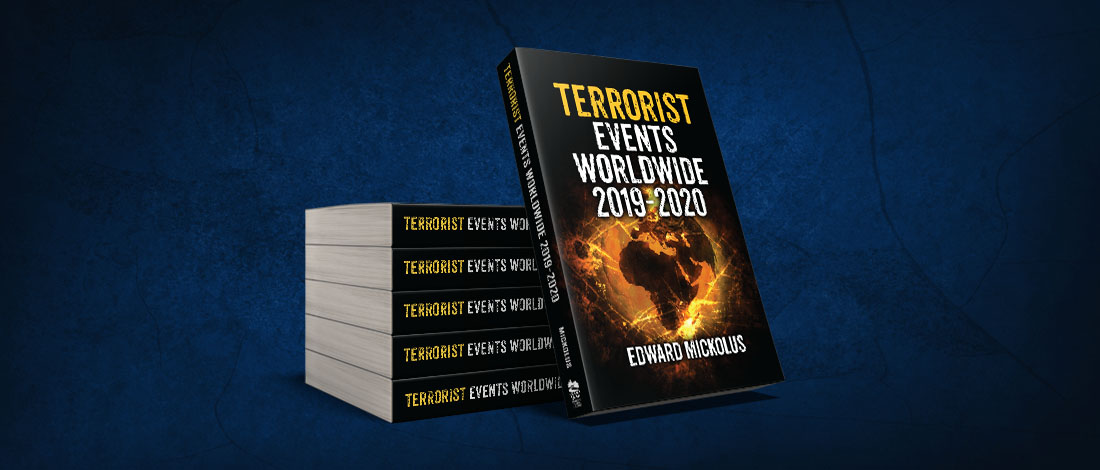This is the 19th in a series of chronologies of international and domestic terrorist attacks and global, regional, and individual government and private responses.
The year 2020 was sufficiently different from preceding years in this series that it merits separate treatment in the Introduction and has a separate chronology.
This book uses the same definition of terrorism as found in its predecessors, allowing comparability across decades. Terrorism is the use or threat of use of violence by any individual or group for political purposes.
The Introduction chapter provides an overview of terrorism developments in 2019 and 2020. The rest of the book includes a region-by-region (and within each, a country-by-country) look at terrorist incidents in chronological order—including a separate section updating events that occurred prior to 2019—and a bibliography.
- Title : Terrorist Events Worldwide 2019-2020
- Author : Edward Mickolus
- Publisher : Wandering Woods Publishers
- Publication Date : October 21, 2021
- Language : English
- Paperback : 411 pages
- ISBN-10 : 1949173135
- ISBN-13 : 978-1949173130
- Item Weight : 1.57 pounds
- Dimensions : 7 x 0.93 x 10 inches

Reviews
Livre – Edward Mickolus. Une source importante pour la recherche sur le terrorisme
Table of Contents
Introduction
Developments in 2019
Developments in 2020
2019 Chronology
- Worldwide
- Africa
- Asia
- Australia/New Zealand/Pacific
- Europe
- Latin America
- Middle East
- North America
2020 Chronology
- Worldwide
- Africa
- Asia
- Australia/New Zealand/Pacific
- Europe
- Latin America
- Middle East
- North America
- Updates of pre-2019 incidents
- Bibliography
Introduction
This is the 19th in a series of chronologies of international and domestic terrorist attacks and global, regional, and individual government and private responses.
The year 2020 was sufficiently different from preceding years in this series that it merits separate treatment in the Introduction and has a separate chronology.
This book uses the same definition of terrorism as found in its predecessors, allowing comparability across decades. Terrorism is the use or threat of use of violence by any individual or group for political purposes. The perpetrators may be functioning for or in opposition to established governmental authority. A key component of international terrorism is that its ramifications transcend national boundaries, and, in so doing, create an extended atmosphere of fear and anxiety. The effects of terrorism reach national and worldwide cultures as well as the lives of the people directly hurt by the terrorist acts. Violence becomes terrorism when the intention is to influence the attitudes and behavior of a target group beyond the immediate victims. Violence becomes terrorism when its location, the victims, or the mechanics of its resolution result in consequences and implications beyond the act or threat itself.
The book includes a region-by-region (and within each, a country-by-country) look at terrorist incidents—including a separate section updating events that occurred prior to 2019—and a bibliography. The Incidents section is based solely on publicly available sources, including the Associated Press, Agence France-Presse, UPI, NPR, al-Jazeera, Reuters, CNN, Newsweek, NBC News, ABC News, CBS News, Fox News, New York Times, Washington Post, Miami Herald, Wall Street Journal, BBC, Sky News, Air Force Times, Navy Times, Marine Corps Times, Stars and Stripes, Long War Journal, U.S. News and World Report, Washington Examiner, USA Today, Times of London, Washington Post 202, The Guardian, Daily Telegraph, Radio Free Europe, Fars, Anadolu, IRNA, Florida Times-Union, overseas national and local media, and a host of United Nations, government agency, and non-governmental organization press releases and press conferences and research service reports. If not otherwise specified in the text, the Associated Press was the principal source of an incident’s details.
This section is not intended to be analytical, but rather comprehensive in scope. As such, the section also includes descriptions of non-international attacks that provide the security and political context in which international attacks take place. In some cases, the international terrorists mimic the tactics of their stay-at-home cohorts. Often, these are the same terrorists working on their home soil against domestic, rather than foreign, targets. Domestic attacks often serve as proving grounds for techniques later adopted for international use. I have therefore included material on major technological, philosophical, or security advances, such as: the use of letter bombs; food tampering; major assassinations; attempts to develop, acquire, smuggle, or use precursors for an actual chemical, biological, radiological, or nuclear weapon; key domestic and international legislation and new security procedures; key arrests and trials of major figures; and incidents involving mass casualties. Non-international entries do not receive an eight-digit code (described below).
The section also provides follow-up material to incidents first reported prior to January 1, 2019. For example, updates include information about the outcome of trials for terrorist acts occurring prior to 2019 and “where are they now” information about terrorists and their victims. The update is identified by the original incident date, and includes enough prefatory material to give some context and to identify the original incident in the earlier volumes.
The international terrorist incidents and airline hijackings are identified by an eight-digit code. The first six digits identify the date on which the incident became known as a terrorist attack to someone other than the terrorists themselves (e.g., the date the letter bomb finally arrived at the recipient’s office, even though terrorists had mailed it weeks earlier; or the date on which investigators determined that an anomalous situation was terrorist in nature). The final two digits ratchet the number of attacks that took place on that date. In instances in which either the day of the month or the month itself is unknown, “99” is used in that field.
The information cutoff date for this volume is December 31, 2020.
The Bibliography section includes references drawn from the same public sources that provide the incidents, literature searches, and contributions sent by readers of previous volumes. It does not purport to be comprehensive. The citations are grouped into topic areas that were chosen to make the bibliography more accessible, and includes print and web-based material. The Bibliography gives citations on key events and may be referenced for more detail on specific attacks described in the Incidents section.







